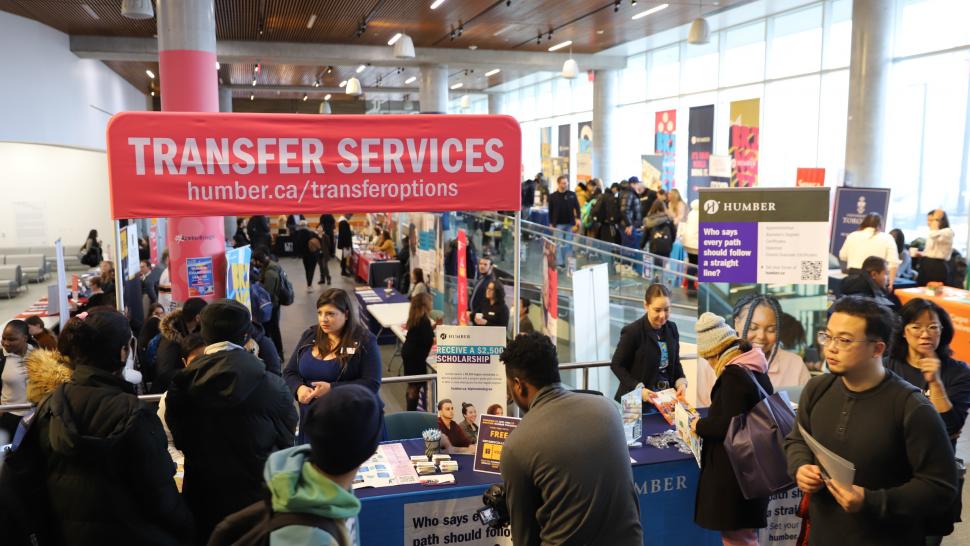
A visit to the ONCAT Conference confirmed to Judy Tavares that Humber College is a leader when it comes to the College’s pathways and transfer opportunities.
Tavares, manager, Student Mobility and Pathways at Humber, said there was an increased interest in Prior Learning Assessment and Recognition (PLAR), which is giving academic credit for prior learning based on previous experiences such as work, military service, experiential learning or volunteerism. Tavares said she was pleased to see it being discussed and said, since she has been with Humber, it’s been a focus for her team.
Tavares said Humber is showing a strong commitment to student mobility and pointed to how Humber is expanding its range of credentials, pathways, and recognition of prior learning (RPL) processes to support transitions between high school, post-secondary education, and employment. This is priority one in Humber’s Academic Plan for 2023-2026.
Tavares said RPL is particularly important as about 65 per cent of Humber students don’t come directly from high school and almost 30 per cent of Humber’s students are over the age of 25.
“Colleges are really a place for lifelong learning and RPL really needs to be an integral part of that process so that we are meeting learners where they are,” said Tavares.
At the conference, a graphic was shown indicating there are more than 27,000 transfer Pathways between Ontario post-secondary institutions, which includes universities, colleges and Indigenous institutes.
The College offers many pathways into Humber programs from other colleges, between Humber programs, and beyond to other post-secondary institutions in the province, country and around the world. Humber offers more than 150 pathways from Ontario Graduate Certificates to Master’s programs at partner institutions and more than 100 Humber diploma to degree pathway opportunities.
Another graphic showed that students with lower high school GPAs may use transfers strategically. It stated that direct entry and university transfer applicants tend to report higher grades in high school than transfer students originating from college. It said one potential interpretation is that those traveling the college-to-university pathway may have been unable to gain admission to their preferred university programs directly after high school and took a roundabout pathway to their university program of choice.
“Transfer makes education more accessible,” noted Tavares, adding many transfer and pathways students excel in the post-secondary system whether they started at college and moved to university or vice-versa.
The flexible pathways and transfers provided are invaluable, she said. For example, a high school student getting ready to select their undergraduate degree might not be aware that they have the option in the future to take a post-graduate course that can help them achieve the career they want.
It allows students to take an undergraduate program they’re passionate about, not necessarily one they think will lead to a good career immediately upon graduating.
Those who attended the conference also heard about a positive association between mean transfer credits being awarded and graduation rates. Researchers found that the predicted probability of graduation increased based on the number of transfer credits awarded.
Tavares said that 50 per cent of learners who come to Humber have some post-secondary experience and at the conference they heard that at least 60,000 students enrolled in the province have received credit from previous post-secondary experience. As well, they heard that the most common transfer pathway learners take is university to college followed closely by college to university.
For more information on Humber’s many pathway options, visit the Explore Humber Pathways website.